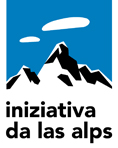The Article on the Protection of the Alps was adopted by the Swiss people in a referendum on 20 February 1994 and is therefore now part of the Swiss constitution. The founders of the Alpine Initiative have formulated the constitutional text as an objective only. It is up to the Federal Council (the Swiss cabinet) and the Swiss parliament to take measures to implement the text. They stipulated the implementation of the ban on the increase in road capacity in a law on transiting road traffic. The transfer of freight traffic rom road to rail is to be achieved by a collection of different measures.
The text of the article on the protection of the Alps in the constitution of the Swiss Confederation:
Art. 84 Alpine Transit*
(1) The Confederation shall protect the alpine regions from the negative effects of transit traffic. It shall limit the nuisances caused by such traffic to a level which is harmful neither to people, animals and plants, nor to their environment.
(2) Transalpine freight in border-to-border transit shall be carried by rail. The Federal Council shall take the necessary measures. Exceptions are only permitted if they are unavoidable. They must also be specified by a law.
(3) The capacity of transit roads in the alpine regions may not be increased. Bypasses to relieve the pressure of through transit traffic in towns and villages are excluded from this provision.
Art. 196 Transitional provisions in terms of the Federal Decree of 18 December 1998 on a new Federal Constitution
1. Transitional provision to Art. 84 (Transalpine transit traffic)
The transfer of freight transit traffic from road to rail must be completed ten years after the adoption of the popular initiative for the protection of the alpine regions from transit traffic.
* Article 36.6 of 1994 was renumbered in 1998 in the new constitution of the Swiss confederation and became article 84. The issuing of legally binding acts in the form of ordinances is now provided for all legislating decisions of the Federal Council in article 182, paragraph 1 of the Swiss constitution and is therefore no longer mentioned in the Article on the Protection of the Alps.

